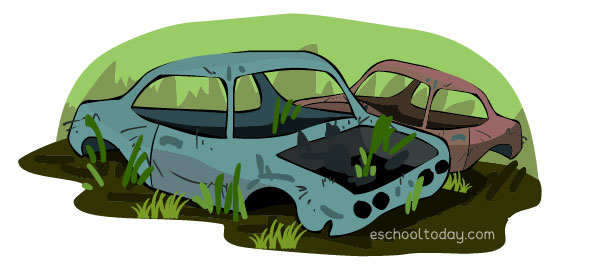- Waste management
Sources of waste
Municipal sources of waste:
This includes trash or garbage from households, schools, offices, market places, restaurants, and other public places. They include everyday items like food debris, used plastic bags, soda cans and plastic water bottles, broken furniture, grass clippings, product packaging, broken home appliances, and clothing.
Medical/Clinical sources of waste:
Medical/clinical waste refers to waste produced from health care facilities, such as hospitals, clinics, surgical theaters, veterinary hospitals, and labs. They tend to be classified as hazardous waste rather than general waste.
Items in this group include surgical items, pharmaceuticals, blood, body parts, wound dressing materials, needles, and syringes.
Agricultural sources of waste:
Typically, this is waste generated by agricultural activities. These include horticulture, fruit growing, seed growing, livestock breeding, market gardens, and seedling nurseries.
Waste items in this group include empty pesticide containers, old silage wrap, out of date medicines and wormers, used tires, surplus milk, cocoa pods, and corn husks.
End-of-life Automobiles:

When cars are all old and not working again, where do they end up? Many people leave them to rust in the fields, but there is a better way to deal with them. In many cities, these vehicles are sent to the plant, where all the removable parts are taken out for recycling. The rest is flattened up and shredded into pieces for recycling. The last bits that cannot be used again are sent to a landfill.
Industrial sources of waste:
Since the industrial revolution, the rise in the number of industries manufacturing glass, leather, textile, food, electronics, plastic, and metal products has significantly contributed to waste production. Take a look at the things in your home. Every item there was probably produces by a manufacturing plant, and possibly, industrial waste was produced as a result.
Construction/demolition sources of waste:
Construction waste is that resulting from the construction of roads and buildings. Sometimes old buildings and structures are pulled down (demolished) to make space for new ones. This is particularly common in old cities that are modernizing. This kind of structural waste is called demolition waste.
Waste items include concrete debris, wood, earth, huge package boxes and plastics from the building materials and the like.
Electronic sources of waste:
It is waste from electronic and electrical devices. Think of DVD and music players, TV, Telephones, computers, vacuum cleaners and all the other electrical stuff in your home. These are also called e-waste, e-scrap, or waste electrical and electronic equipment (WEEE)
Some e-waste (like TV) contains lead, mercury, cadmium, and brominated flame retardants. These are harmful to humans and the environment. It is therefore important that the authorities responsible for ensuring their disposal stay on top of their work.
